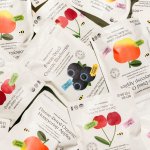
Where Overwhelm Meets Optimism
Written by Mark Paton Posted 20 April 2023
A quick glance at the news can be daunting. Last month we received our ‘final warning’ from the UN’s Intergovernmental Panel on Climate Change and each week new evidence shows that humans have altered the earth’s natural processes (atmospheric, geologic, hydrologic, biospheric, you name it). We have entered the Anthropocene era, and our impact on the planet is the greatest challenge we face. Ignoring this reality is not an option.
I’ll openly admit that I often feel uncertain about how to respond to all of this. My thoughts are occupied by questions about how we responsibly adapt the way we work, influence our clients to make progressive choices, and motivate our team against the grim outlook. But in truth, this is not a challenge to face alone. Creative collaboration is essential to addressing these consequential issues. And, as ever, my individual anxieties are balanced and focused by the perspectives of my partners and colleagues.
As with much of our work, together we have found that there are ways to tackle these challenges by taking lessons from history and trusting in human ingenuity. Despite the occasional evil mastermind, there are countless brilliant innovators whose revolutionary ideas can spring into the public consciousness and inspire action.

Some quick examples:
Stanford Professor Mark Z Jacobson argues in his book No Miracles Needed that we already have all the necessary tools to fix the climate and reach 100% of our energy needs from renewable sources. According to Jacobson, the solution lies not in ‘miracle’ technologies but in strong leadership and a belief in our ability to make the necessary changes.
The (appropriately named) Air Company has a unique mission to convert Carbon Dioxide, the most abundant pollutant on our planet, into an infinite resource. What began as a proof-of-concept Vodka has recently blossomed into a model for sustainable jet fuel (called AirMade), which has been used in its first successful test flight.
Whether either of these bold visions comes to further fruition, we can assume that the ideas are out there. The question then is: how should design contribute?
In short, design and creativity are central.
Creativity is the lever that will combine sophisticated visual communication with financial nous to finally establish belief and trust in renewable energy systems.
Design is the tool that makes jet fuel or vodka made from Carbon Dioxide desirable (look at that bottle!).
And that’s where we get back to the lessons from history.

The Arts and Crafts movement emerged as a response to the Industrial Revolution, a time of unprecedented societal change that was difficult for many to accept. Led by William Morris, a group of creators championed the importance of the hand, heart and mind in craftsmanship, as well as the intrinsic value of materials and respect for the natural world’s fundamental beauty and wisdom.
As we come to terms with our own societal shift – from a culture of abundance, to one of restraint – these themes hold significant relevance. Using less, design must now consider how to create with empathy for the mind and senses, honouring the human desire for dignity and beauty. But above all, it must be done in harmony with nature, enhancing regenerative processes.
In the face of the restriction of materials, some may believe that the potency and possibility of design will be limited. But I would argue that the opposite is true – creative imagination has the power to unlock the potential for innovation. The role of design for brands has always been to create desire, but now we must apply our skills to make good choices desirable.
So what should a contemporary creative movement should look like? Can we galvanise our community into a school of thought that will stand the test of time as well as Morris’?
For me, it starts with reinforcing the value of the creative industries and their contributions, especially to those who hold power, such as financial institutions and governments.

Secondly, to make a meaningful impact in today’s world, our industry must expand its reach beyond marketing and branding to collaborate with scientists, engineers, logisticians, analysts, and economists who are developing solutions. By visualising and promoting their ideas, we can create recognisable brands that promote sustainable living. We have found Kate Raworth’s Doughnut Economics model a useful reminder of the different areas of focus, and the merits of a simple visual metaphor.
As this model suggests, there is unlikely to be a Silver Bullet technology that will solve all our environmental challenges. It is more realistic to imagine change as the result of many smaller nudges, encouraging people to adopt better behaviours by presenting green options that are made compelling and desirable through persuasive and captivating design. Our collective challenge is to seek out these businesses and apply our talents to supercharge their potential.
The battle against climate change is a ‘fight for the public imagination’, according to the Financial Times. So let’s play our part and capture that imagination. While the headlines may be scary, the IPCC report also offers hope: ‘if we act now, we can still secure a liveable sustainable future for all’.

